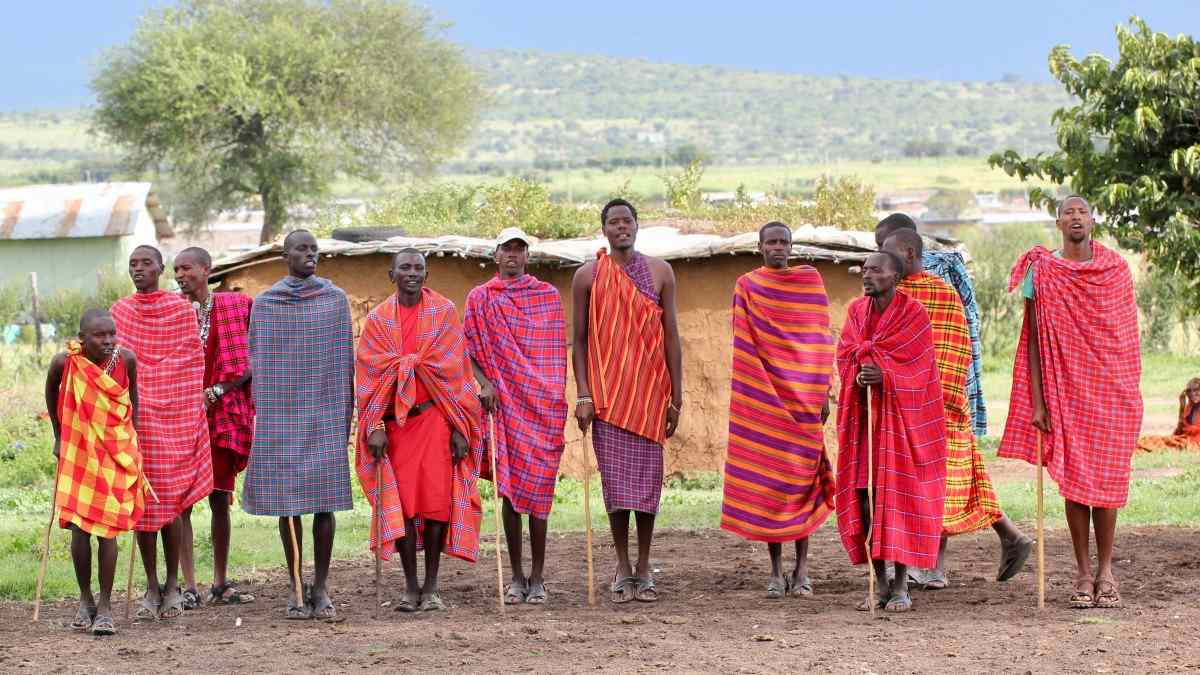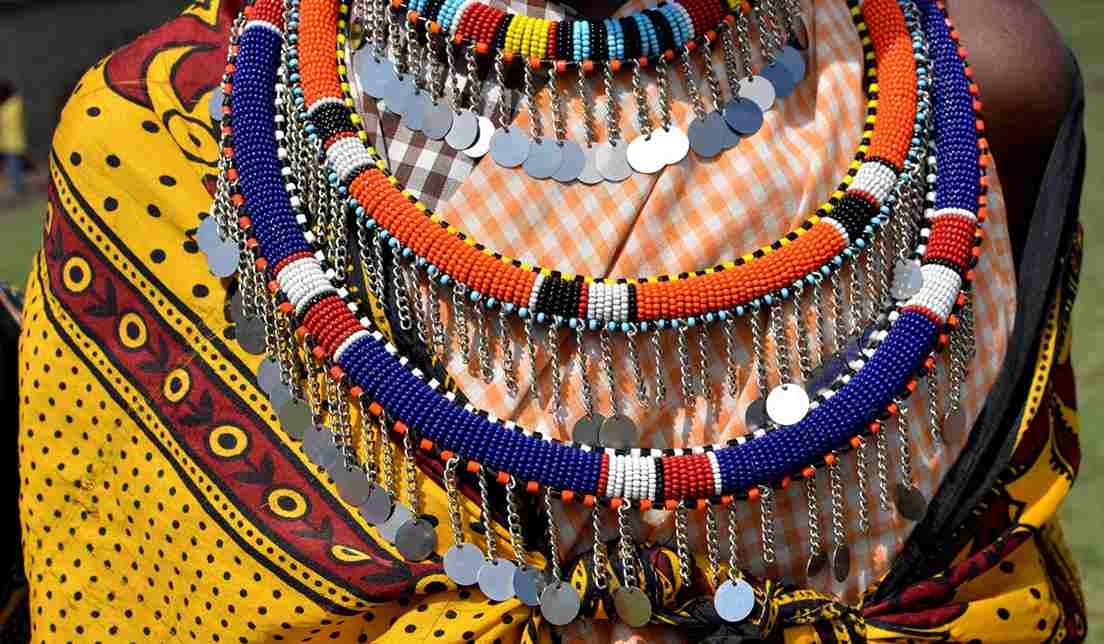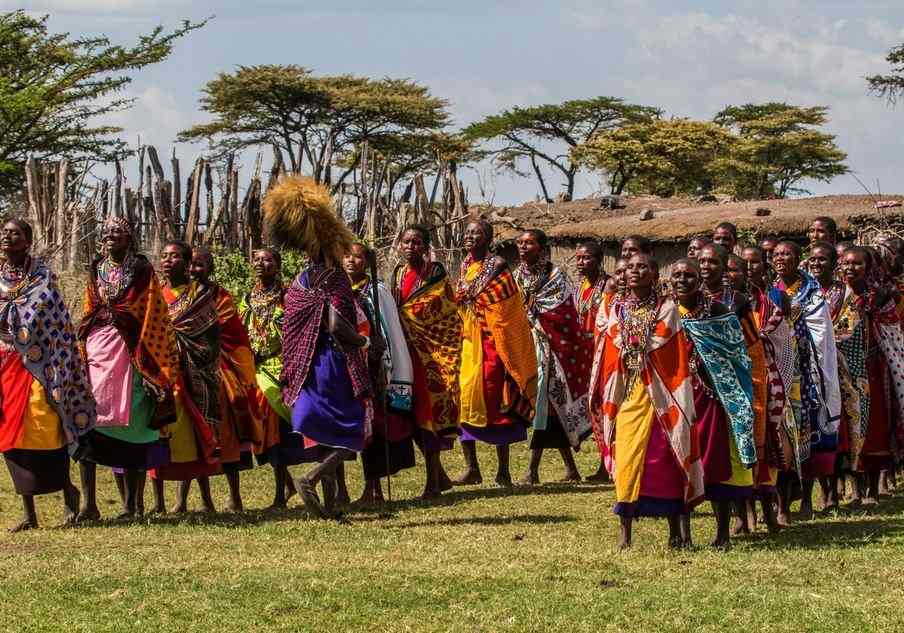The Maasai Tribe
The Maasai tribe, a proud and resilient community, has captured the fascination of the world with its distinctive cultural practices, vibrant traditions, and deep connection to the African landscape. Nestled in the East African countries of Kenya and Tanzania, the Maasai people have managed to preserve their unique way of life despite the challenges of the modern world.
In this comprehensive exploration, we delve into the history, culture, traditions, and contemporary realities of the Maasai, shedding light on their remarkable journey.
Embrace the beauty of cultural diversity and enrich your understanding of the world! Learning about different cultures is an enriching journey that broadens our perspectives, fosters empathy, and fosters respect for one another. It allows us to appreciate the unique traditions, values, and customs that shape the identity of various communities around the globe. Learn about the Hamer Tribe, the Hadza Tribe, the Sami, the Akha People, the Aymaraes, the Kazakh People and the Adivasi on AmplifyGlobe.

Historical Roots of the Maasai Tribe
The Maasai tribe, renowned for their distinctive culture, vibrant traditions, and unwavering resilience, holds a rich historical tapestry that dates back centuries. In this exploration, we embark on a captivating journey through time to uncover the profound historical roots of the Maasai people, shedding light on the forces that have shaped their identity and contributed to their unique heritage.
Ancient Origins
The origins of the Maasai tribe can be traced to the Nilotic people who migrated southward from the Nile region in present-day Sudan. Archaeological evidence suggests that the Maasai settled in the East African Rift Valley around the 15th century, establishing a pastoralist lifestyle that would become integral to their identity.
Nomadic Pastoralism
One of the defining features of the Maasai historical roots is their nomadic pastoralist lifestyle. The tribe became adept herders of cattle, relying on these animals not only for sustenance but also as a symbol of wealth and social status. The ability to traverse vast landscapes in search of grazing land and water sources shaped the Maasai's intimate connection with the environment.
Colonial Encounters
The late 19th and early 20th centuries marked a period of significant upheaval for the Maasai people as European colonial powers, primarily the British, exerted influence over East Africa. The Maasai engaged in resistance against colonial forces, fiercely defending their land and cultural autonomy. Despite the challenges, the tribe managed to retain much of its cultural identity.
Maasai Language
At the heart of Maasai culture is their language, Maa. The Maasai people take immense pride in their linguistic heritage, using Maa as a means of preserving their oral traditions. The language is rich in nuances and expressions that convey not only day-to-day communication but also the profound cultural values that define the Maasai way of life. Transitioning between Maa and other languages, such as Swahili and English, reflects the Maasai's adaptability in the face of a changing world.
Origins and Structure
The Maasai language, known as "Maa" or "Ol Maa," belongs to the Eastern Nilotic branch of the Nilo-Saharan language family. With various dialects spoken across Kenya and Tanzania, Maa is an intricate language with a distinctive grammatical structure and phonetics, mirroring the Maasai people's deep connection to their environment.
Unique Phonetics
One of the notable features of the Maasai language is its phonetic richness. Maa employs a series of distinctive vocalizations, including click sounds, making it stand out among other languages in the region. This unique phonetic character contributes to the melodic and rhythmic quality of spoken Maa.
The Maasai language serves as a vessel for preserving and transmitting the rich cultural heritage of the Maasai community. It encapsulates their folklore, wisdom, and the profound connection they share with the land and their livestock. Each word and expression carries a depth of meaning, encapsulating the nuances of Maasai life. mirroring the Maasai people's deep connection to their environment.
Transitioning Through Life Stages
The life of a Maasai individual unfolds through distinct stages, each marked by rites of passage that carry profound cultural significance. The journey begins with childhood, where children are cared for within the family unit. As they mature, boys undergo the transformative Eunoto ceremony, transitioning into the warrior class. For Maasai women, the Eunoto marks the initiation into womanhood. The elders, the esteemed guardians of tradition and wisdom, guide the community through the transitions, fostering a sense of continuity and shared identity.
Initiation into Adulthood
The Maasai rights of passages are a testament to the community's commitment to preserving its cultural heritage. One of the most crucial ceremonies is the initiation into adulthood, typically occurring around the age of 15. Young Maasai men and women undergo a series of rites that symbolize their transition from adolescence to responsible adulthood.
Circumcision Rituals
For young Maasai males, circumcision is a pivotal rite of passage. The ceremony is not merely a physical act but a profound spiritual and social event, signifying strength, courage, and resilience. Female initiation rites, while less publicized, hold equal importance, focusing on qualities of endurance and maturity.
Warriorhood
Following initiation, young Maasai men enter the warrior stage, where they are tasked with protecting the community and livestock. During this period, warriors build their physical prowess and hone essential survival skills. The warrior stage reinforces the importance of courage, loyalty, and unity within the Maasai society.
Marriage Customs
Marriage is another significant Maasai rights of passage, embodying the transition to family life and communal responsibility. Traditional ceremonies involve elaborate rituals, exchanges of dowries, and celebrations that unite not only the couple but also their respective families and clans.
The Adornments and Clothing of Maasai People
The Maasai are renowned for their vibrant and distinctive clothing, adorned with intricate beadwork and colorful patterns. Each bead has a specific meaning, reflecting the wearer's age, social status, and even personal experiences. The intricate beadwork is not merely decorative; it serves as a visual language, conveying messages about the wearer's identity within the community. This unique form of expression demonstrates the Maasai's commitment to preserving their cultural heritage while embracing the evolving dynamics of the contemporary worl
Maasai Jewelry
Maasai jewelry is synonymous with striking beadwork that captivates the eye with its vivid hues. The beads, often sourced locally or traded over generations, come together to form intricate patterns and designs. Each color in Maasai beadwork carries a unique significance, representing aspects of Maasai life, such as love, bravery, and the connection to nature.establishing a pastoralist lifestyle that would become integral to their identity.
Beyond their aesthetic appeal, Maasai beads hold profound cultural symbolism. Maasai people use jewelry not only as a form of personal expression but also to convey their social status, age, and even marital status. Intricately beaded necklaces, bracelets, and earrings are donned during special ceremonies and celebrations, serving as a visual language that tells the wearer's story.
The creation of Maasai jewelry is a meticulous craft passed down through generations. Traditionally, it is the women who craft these intricate pieces, investing time and skill into each bead placement. The art of beadwork is a communal activity, fostering a sense of unity and shared cultural identity within the Maasai community.

Maasai Shield
For the Maasai community, the shield holds deep cultural and symbolic meaning. Traditionally used for defense in times of conflict, the shield has evolved into a powerful emblem of Maasai identity and warriorhood. Its design elements and colors often signify different aspects of Maasai life, including social status, age, and even the individual warrior's achievements.
Crafted with precision and expertise, Maasai shields are typically made from lightweight materials such as cowhide stretched over a wooden frame. The outer layer of the shield is adorned with intricate beadwork, reflecting the artisan's skill and creativity. The colors used in the beadwork are not arbitrary; they carry specific meanings deeply rooted in Maasai culture.
The beadwork on Maasai shields features a vibrant palette of red, white, blue, and black. Each color carries its own symbolism:
Red: Symbolizes bravery, strength, and the challenges faced by the Maasai people.
White: Represents purity, health, and the hope for a prosperous future.
Blue: Signifies energy, the sky, and the life-giving nature of water.
Black: Symbolizes the hardships of life and the challenges faced by the community.
In addition to colors, the beadwork often forms intricate patterns and symbols that convey messages and stories unique to the Maasai culture. These patterns are carefully selected and crafted, making each shield a personalized and meaningful piece of art.Cattle, the Lifeblood of the Maasai
Cattle play a pivotal role in Maasai society, serving as a symbol of wealth, prestige, and sustenance. The Maasai are skilled herders, with an intricate understanding of their cattle's needs and behavior. The deep connection between the Maasai and their livestock is evident in the rituals and ceremonies that revolve around cattle, such as the elaborate Eunoto ceremony marking the passage of young men into warriorhood.
The relationship with cattle is not merely economic but embodies spiritual and social dimensions, reflecting the intricate tapestry of Maasai life.
Dances and Celebrations
Dance holds a central place in Maasai culture, serving as a form of expression, celebration, and storytelling. The community gathers for various dances, each with its unique significance. The Adumu, or "jumping dance," performed by Maasai warriors, showcases their agility and strength.
Other dances, such as the Eunoto and Enkipaata, mark important ceremonies and rites of passage. The rhythmic movements and harmonious chants create a sensory experience that transcends time, connecting the present generation with the ancestral spirits and traditions.

Challenges and Resilience
While the Maasai have thrived in their traditional pastoral lifestyle for centuries, the modern world presents new challenges. Encroachment on their ancestral lands, climate change, and economic pressures pose threats to their way of life.
The Maasai, however, demonstrate resilience in the face of adversity, adapting without compromising the core tenets of their culture. Initiatives such as community-based conservation and sustainable tourism empower the Maasai to navigate the complexities of the 21st century while preserving their heritage.
Economic Adaptations
In response to the changing economic landscape, the Maasai have embraced various economic activities beyond traditional cattle herding. Tourism has become a significant source of income, with visitors drawn to the Maasai Mara and Amboseli National Park to experience the rich cultural tapestry of the Maasai.
Handicrafts, including beadwork and traditional artifacts, provide additional avenues for economic sustenance. This economic diversification underscores the Maasai's ability to leverage their cultural assets in a globalized world.
Education and Empowerment
Education plays a pivotal role in empowering the Maasai community, especially the younger generation, to navigate the challenges of the contemporary world. While preserving their cultural values, the Maasai recognize the importance of formal education in providing opportunities for growth and development.
Educational initiatives within Maasai communities strive to strike a balance between traditional wisdom and modern knowledge, fostering a generation equipped to contribute meaningfully to both their community and the broader society.
Health Challenges and Initiatives
Healthcare challenges, including access to medical facilities and diseases affecting the Maasai, are areas of concern. The Maasai face health disparities, with limited access to healthcare facilities in some remote areas. NGOs and governmental initiatives aim to address these challenges, providing healthcare services, promoting hygiene and sanitation, and raising awareness about prevalent health issues.
The Maasai's ability to integrate modern healthcare practices while respecting traditional healing methods reflects their adaptive approach to holistic well-being.
Environmental Conservation Efforts
The Maasai's deep connection to the land extends beyond cultural and economic considerations; it encompasses a profound commitment to environmental conservation. Facing threats such as climate change and habitat loss, the Maasai employ sustainable land management practices and engage in conservation partnerships. Their traditional ecological knowledge, coupled with collaborative efforts with conservation organizations, exemplifies a harmonious relationship between indigenous communities and environmental stewardship.
Conclusion
The Maasai tribe stands as a testament to the resilience of indigenous cultures in the face of modern challenges. Their vibrant traditions, cultural practices, and adaptive strategies offer valuable insights into the intricate interplay between tradition and modernity.
As the Maasai navigate the complexities of the 21st century, they continue to inspire the world with their unwavering commitment to preserving their heritage while embracing opportunities for growth and sustainability. In the tapestry of human diversity, the Maasai tribe remains a vibrant thread, weaving together the past, present, and future